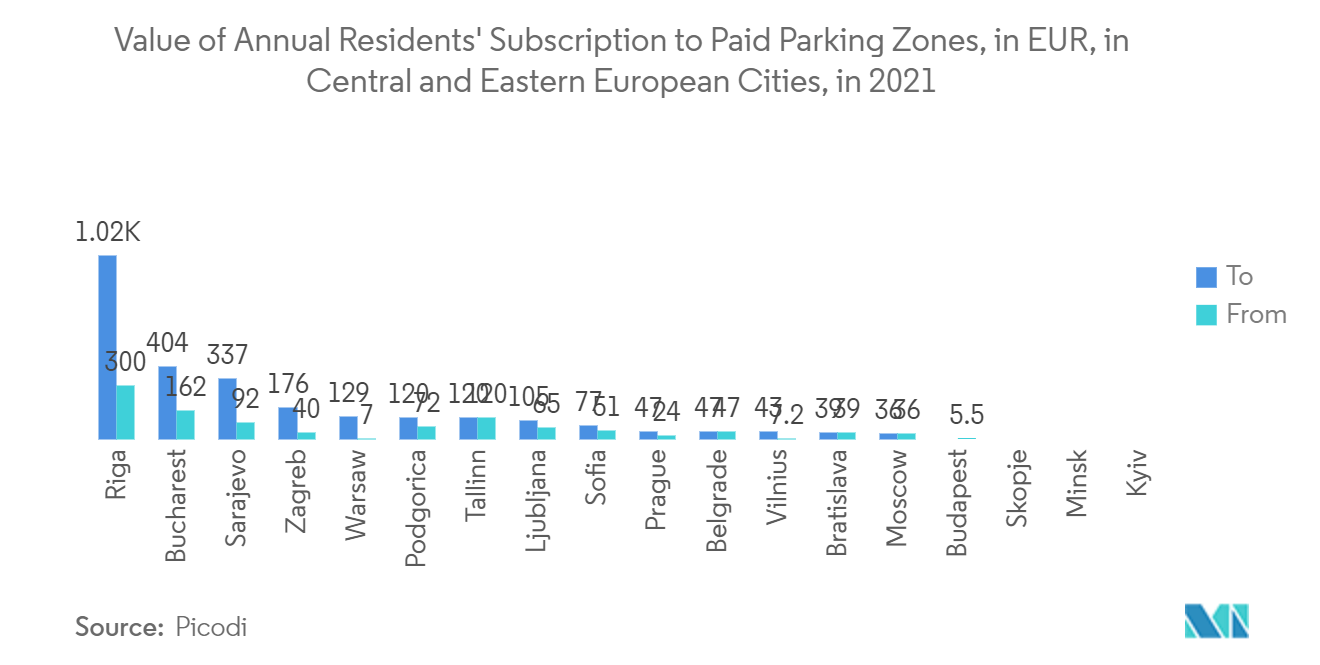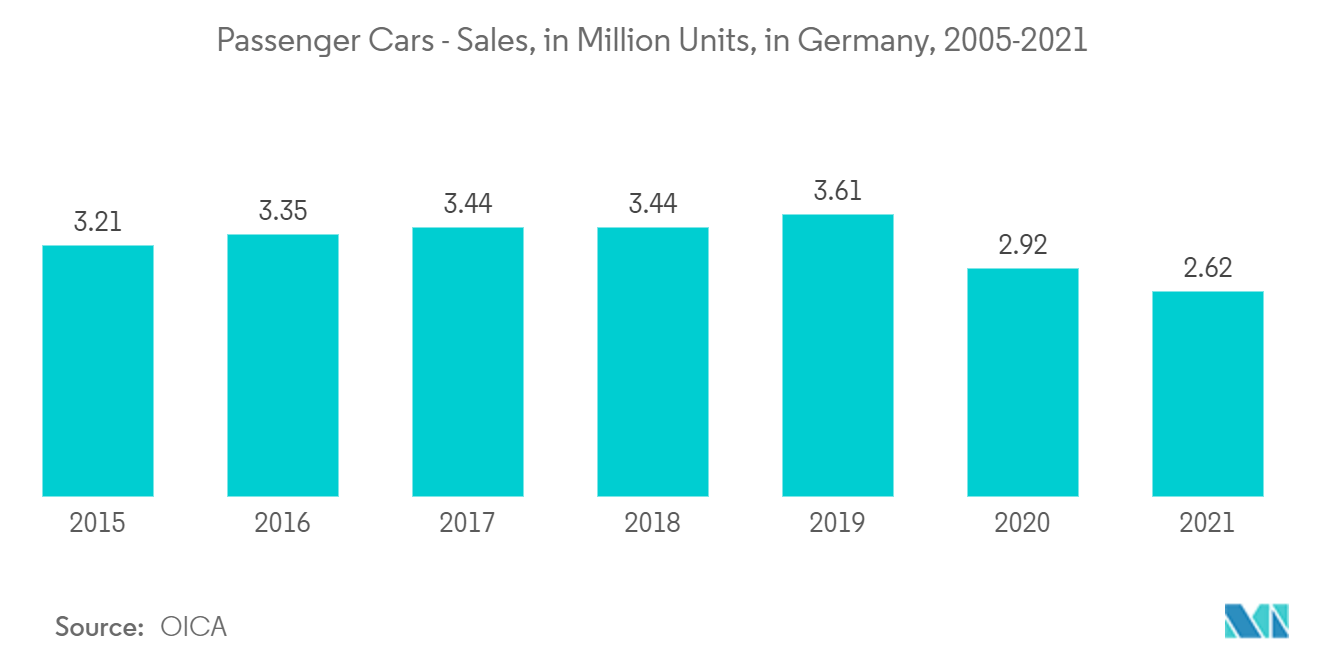Market Trends of Europe Smart Parking Industry
This section covers the major market trends shaping the Europe Smart Parking Market according to our research experts:
Technological Advancements and Ongoing Collaborations Between Local Councils and Technology Providers
- The technological enhancement in connectivity and communication is expected to make these solutions more affordable and sought-after. App support for parking solutions is expected to grow with high mobile penetration. The vendors offering solutions that integrate their client's customers with smart parking solutions are expected to gain more traction and be strategically more competitive.
- Many technologies, such as AI, machine learning, speed monitoring, image recognition, and tracking capabilities, are expected to improve and enhance the user's experience in the market, as the adoption is possible due to the affordability of these services.
- Parking is an essential parameter in creating a smart and connected transportation environment. The smart city concept's smart transportation projects are expected to boost demand over the forecast period.
- The UK government is pushing for rapid and sustainable partnerships to realize its vision for future cities. Moreover, the European Innovation Partnership on Smart Cities and Communities (EIP-SCC) brings cities, businesses, and citizens together to improve urban life. The initiative is designed to accelerate the commercial roll-out of smart city solutions.
- According to a survey conducted by Picodi, Compared to the main cities in Central and Eastern Europe, Riga residents are paying maximum parking in the paid parking zone. Annual subscriptions in this city varied from 300 to 1,200 EUR (1203.77 USD). Individuals who reside in a paid parking zone can purchase a membership in their region. It has benefits such as unlimited parking and lower pricing. Residents of Minsk and Kyiv do not have these advantages. Under regular conditions, they must acquire a garage space or a membership or park their automobile outside the paid parking zone.

Germany is Expected to Hold Major Market Share
- German cities, like most other European counterparts, are old and congested. While parking on the street is the most common means of parking in the country, off-street parking lots (Parkplatz), above-ground garages (Parkhaus), and underground garages (Tiefgarage) are also common.
- Digital support in searching for a parking space occupied multiple start-ups in Germany for the past few years, as searching for a parking space is difficult. According to a survey, a person needs ten minutes on average to find a free parking space. Further analysis by German Automaker Audi showed that approximately 30% of the traffic jams during rush hour are caused by people looking for a parking space. Thus, technology disruptors must devote themselves to this problem and come up with advanced solutions.
- Moreover, a significant driver for these systems is increasing smart city initiatives. Several governments recognize the importance of efficient parking systems in helping the market attain a favorable environment. Vendors in the market studies are taking up similar projects.
- Moreover, the growth of vehicles, especially hybrid and electric vehicles, is expected to lead to the growth of the automotive industry in the country, thereby enabling the companies to focus on technologies that solve the parking issue. This is expected to impact the growth of the market positively. The German automotive industry is leading the technological innovations in the global automotive industry, integrating smart technologies.
- Furthermore, a smart parking innovation from Cleverciti Systems is used to monitor parking space availability in the city's center. The system provides the city's parking department with valuable information, including parameters such as the size of a free parking space, length of stay, and restricted and loading areas.
- According to OCIA, passenger car sales increased from 2015 to 2019. Due to the pandemic in 2019, individuals preferred owning vehicles, so there were maximum sales in 2019. Due to the pandemic supply chain disruption, manufacturing halt, and work-from-home jobs, the sales of passenger cars slightly decreased from 2019 to last year.


